Science Concepts Young Children Learn Through Water Play
Article from Dimensions of Early Childhood Vol 40
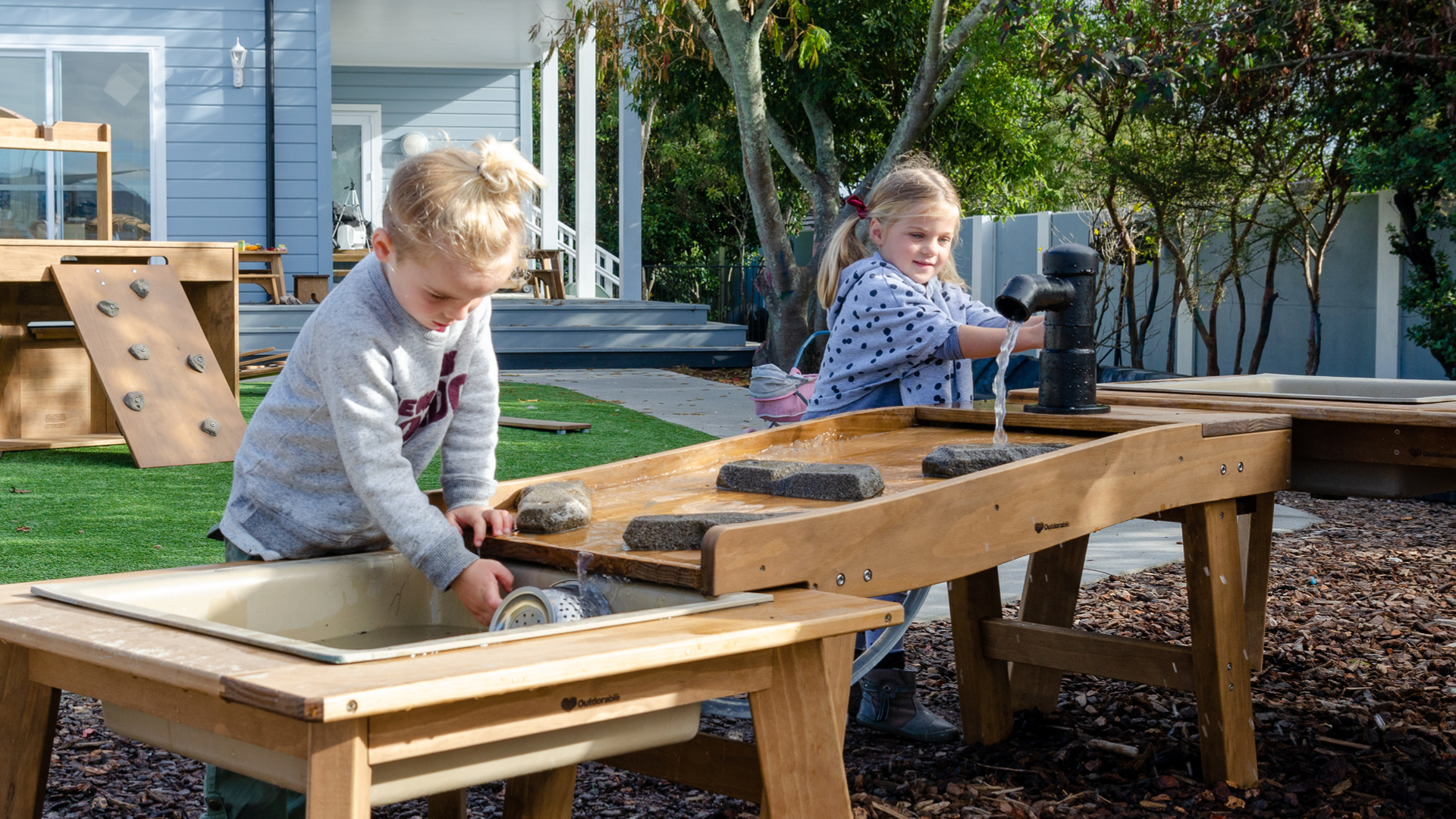
Why is water such a compelling source of learning pleasure for most children? This article convincingly identifies why water play is a key science and mathematics medium that enhances young children’s learning through discovery. Carol M. Gross
Young children can spend countless hours playing with water: pouring it back and forth, watching it spill over the edge of a container, blocking its stream, directing its flow, splashing gently, making waves, and pouring some more. When a water table is not available, they can often be found “washing their hands” in the bathroom for long periods of time, mesmerized by the water. Sometimes it is hard for adults to encourage them to leave the sink.
"Few children can resist
water’s attraction."
Few children can resist water’s attraction. What is going on here? Water is fascinating, fun, and multifaceted. Children can play with it endlessly. But play, for play’s sake, is not water’s only value (Crosser, 1994, Tovey, 1993). Indeed, water play is a compelling focus of study for young children (Chalufour & Worth, 2005). The concepts that young children learn from water play are essential for early childhood educators to be aware of and promote. As educational policymakers and administrators push for more well-defined assessments of learning, teachers need to be able to clearly articulate the specific concepts children learn during all types of play. This article identifies the science concepts involved in a variety of water play activities and the teacher-mediated learning process that can accompany and enhance this learning.
Water Play/Water Study
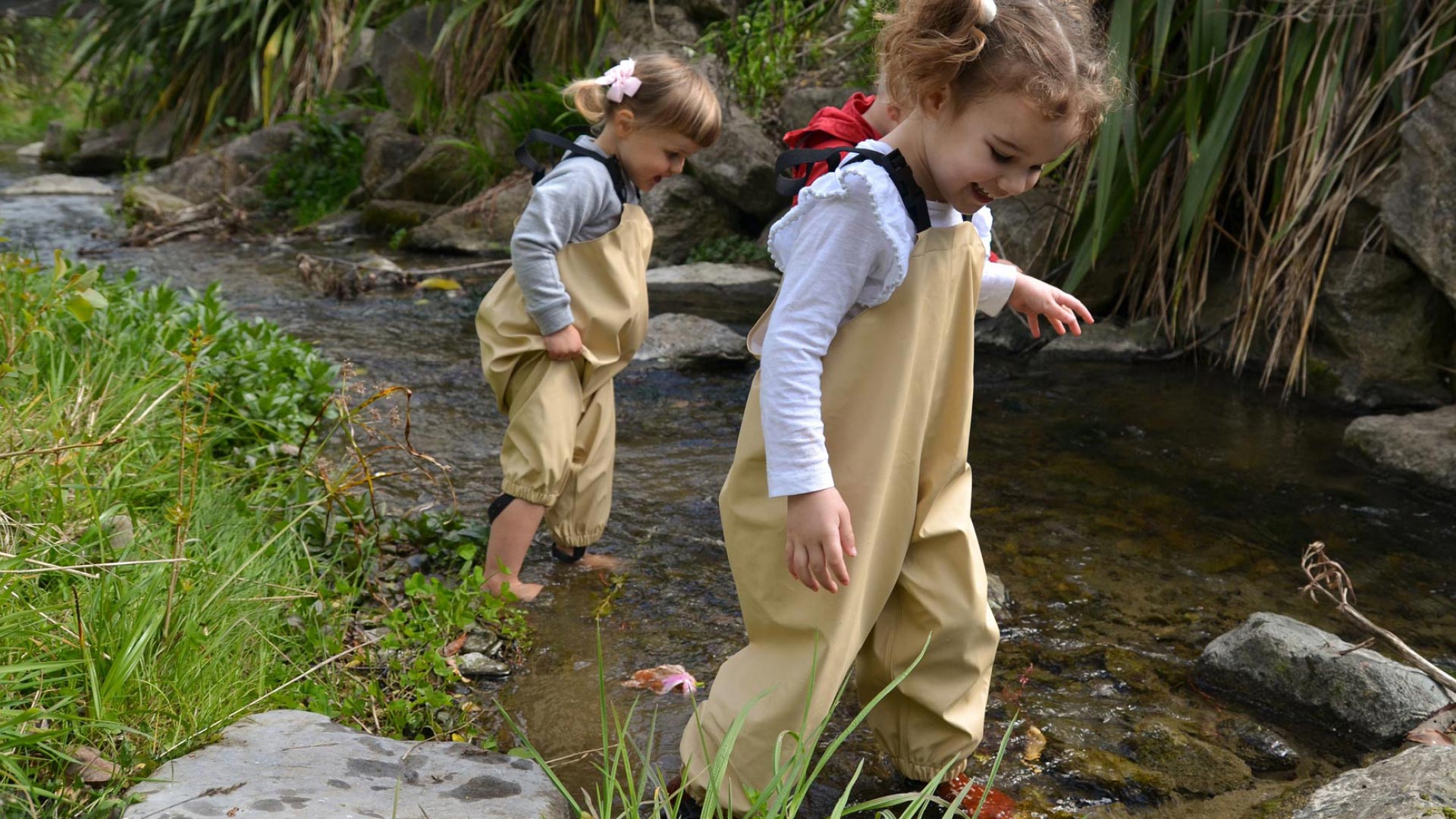
Water and a few inexpensive tools can provide a sensory and learning experience of immense proportions. What is it children get out of their water study, which looks so much like fun? Free play with water can build the foundation for understanding of a multitude of scientific concepts, including those in:
- physics (flow, motion),
- chemistry (solutions, cohesion),
- biology (plant and animal life), and
- mathematics (measurement, equivalence, volume)
"Mastery of these concepts will support children’s understanding of academic subjects in later schooling and life"
Mastery of these concepts will support children’s understanding of academic subjects in later schooling and life. Science is indeed “serious play” (Wassermann, 1990). Science is “everywhere around us. What can children do to increase their understanding of science? Everything!” (Wassermann, 1990, p. 107). Children inquire, observe, compare, imagine, invent, design experiments, and theorize when they explore natural science materials such as water, sand, and mud. Science Learning Theory Science is “a way of exploring and investigating the world around us… not only a way of knowing; it is… a way of doing” (Wenham, 1995, p. 2). Science involves the discovery of factual knowledge (that something is true), causes for what is observed (why something occurs), and procedures (how something is investigated) (Wenham, 1995). “Science education is a process of conceptual change in which children reorganize their existing knowledge in order to understand concepts and processes…more completely” (Havu-Nuutinen, 2005, p. 259). The word process implies something that happens over time with repeated encounters. Children benefit the most from indepth and long-term investigations (Gallas, 1995; Worth & Grollman (2003). Worth and Grollman give vivid, detailed accounts of possible trajectories that projects using the inquiry method can follow. They suggest an investigation of how and where puddles form. They describe an in-depth project about water flow in a pre-K classroom that included creating whirlpools. Some of the children then began to examine small drops of water and how they behave on different surfaces, which led to exploring absorption, as well. The National Science Education Standards (National Research Council, 1996) call for science to be taught through the inquiry method. Inquiry follows the tradition of hands-on exploration of children’s own questions that eventually lead to discovery of scientific concepts.
“Students should be actively involved in exploring phenomena that interest them. These investigations should be fun and open the door to…more things to explore” (American Association for the Advancement of Science [AAAS], 1993, p. 10). Given these assertions and standards, recurring water play with varying tools and materials is certainly a natural venue through which to support beginning and ongoing science learning. Play IS investigation. Water is the source of life and, as such, can provide almost unlimited learning.
First Experiences
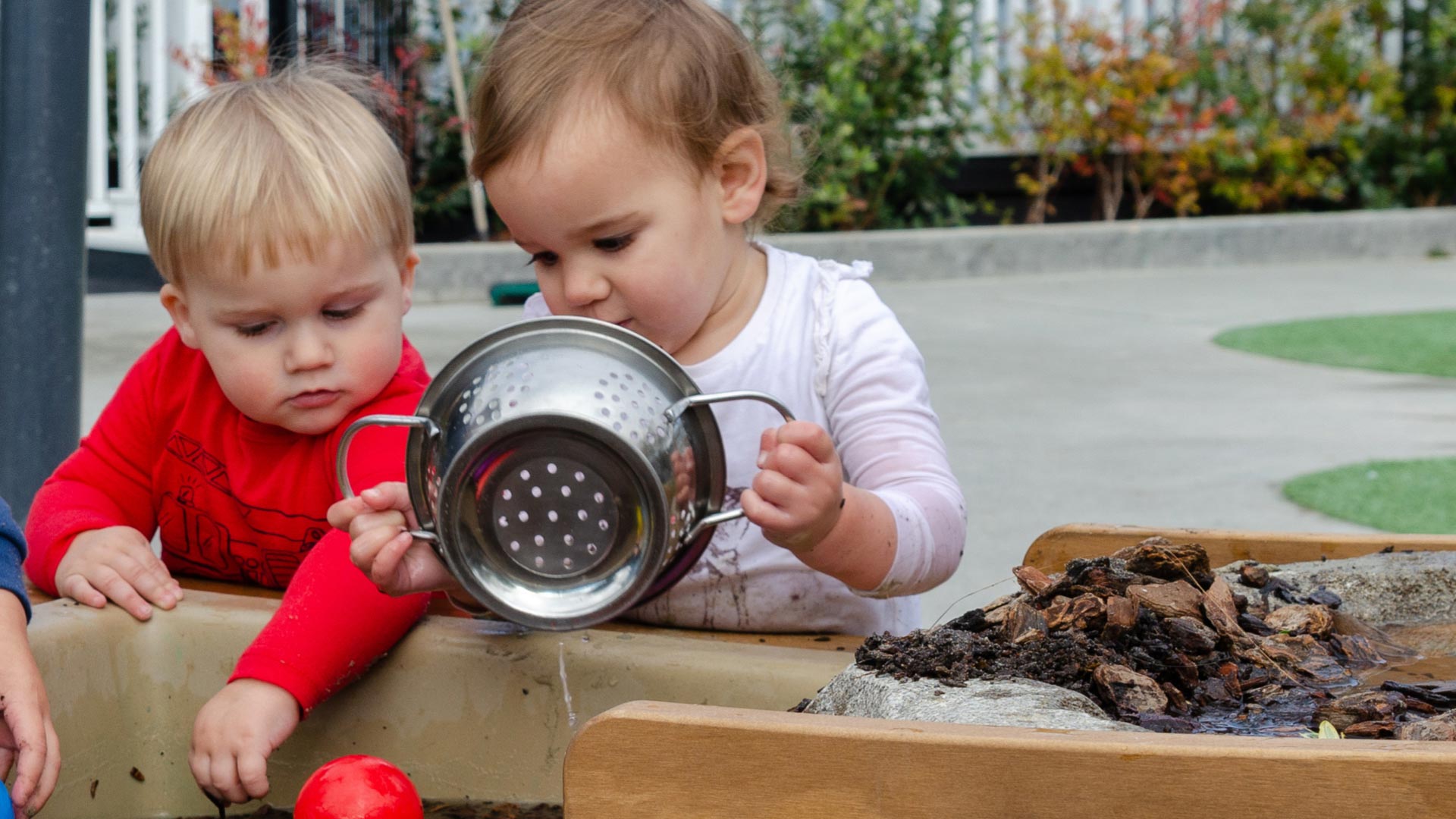
Children’s first learning experiences with water, at home and in child care programs, usually include all kinds of pouring. The tools need not be expensive and may even easily be found in the kitchen and recycle bin. Safe, unbreakable measuring cups and small containers (margarine tubs, yogurt cups) of different shapes and sizes alone can engage very young children. Sturdy funnels may come next. Ladles, straws, basters, and plastic droppers can be new experiences for young children who are old enough to know not to drink the water. These tools are challenging to manipulate correctly so that they draw in and expel the water. All kinds of sifters/colanders can be added, as well. Many children use these simple water-play experiences repeatedly to practice fine motor skills before they move on to more precise or complex activities with other tools.
How to Guide the Science Learning Process
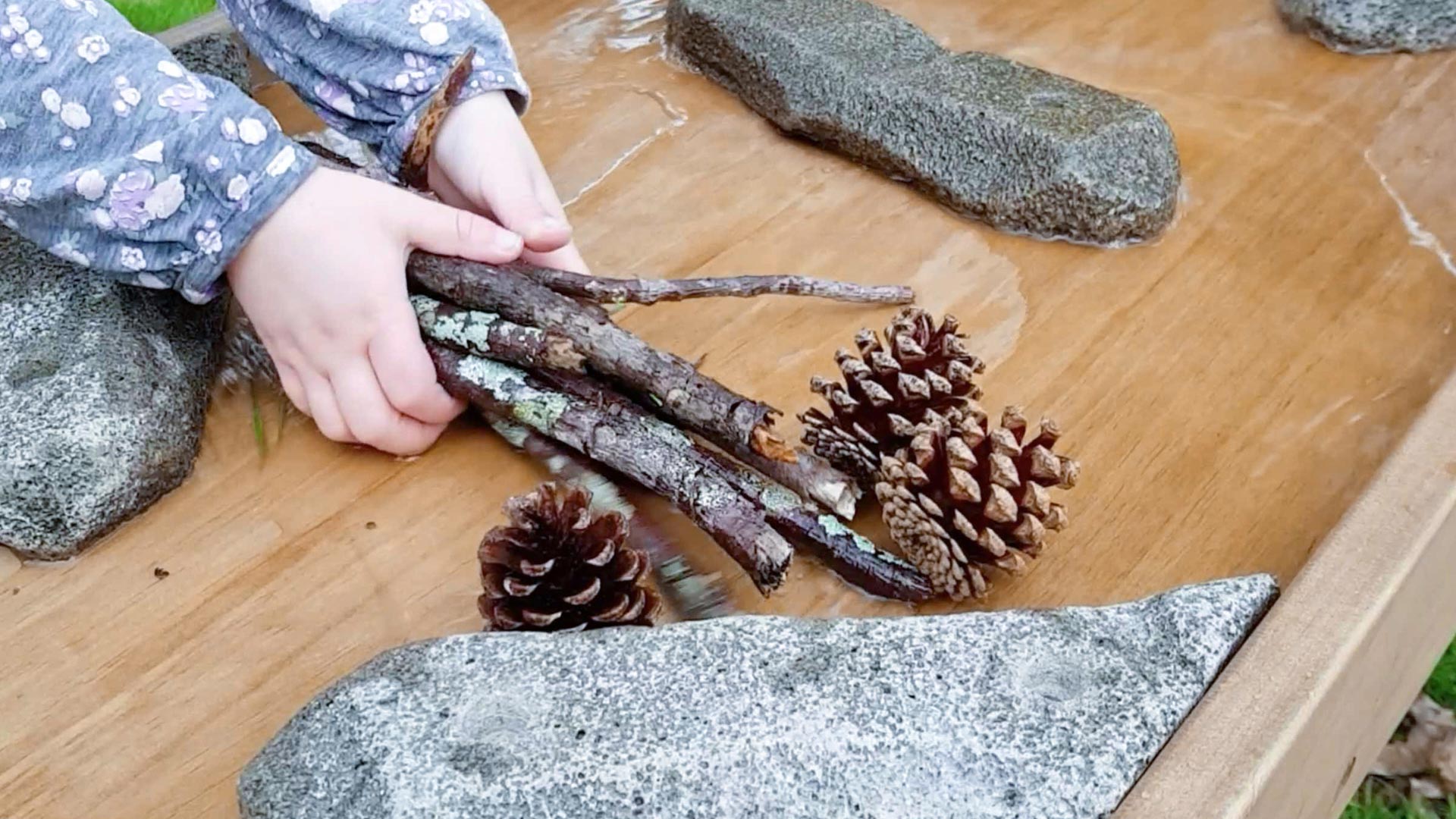
Teachers are researchers, designers, relationship orchestrators, listeners, observers, recorders, documenters of children’s work, collaborators, and mediators (Lewin-Benham, 2011). Expert early childhood teachers facilitate children’s active involvement in the scientific process by providing materials, encouraging children to observe, predict, describe, and theorise about what they are doing. Teachers raise questions and problems as children play, helping them to grow in their thinking. This is an approach to learning that early childhood educators
used historically, but has not always been recognised formally as promoting learning. It has been supported by many theorists, including Vygotsky (1978), Feuerstein (2011), Malaguzzi (1993), and many others. Learning happens in the relationships and conversations between novice and experienced learners. Experienced learners facilitate learning by asking questions and commenting as children play (investigate). This approach has been used for decades in Reggio Emilia schools in Italy, now world-renowned for their highly purposeful and in-depth approach to young children’s learning. Lewin-Benham (2011) describes the teacher’s role, integrating the Reggio Emilia approach with what she refers to as “other inspired approaches” such as Montessori (1967), the Project Approach (Katz & Chard, 2000), and the Creative Curriculum (Dodge, 2002):
- Create an open-flow schedule with flexible amounts of time for exploration
- Recognise that the environment is a teacher and determines the curriculum
- Engage children in meaningful conversation
- Document children’s work and learning
- Assess children’s process and progress
Engage in Meaningful Conversations
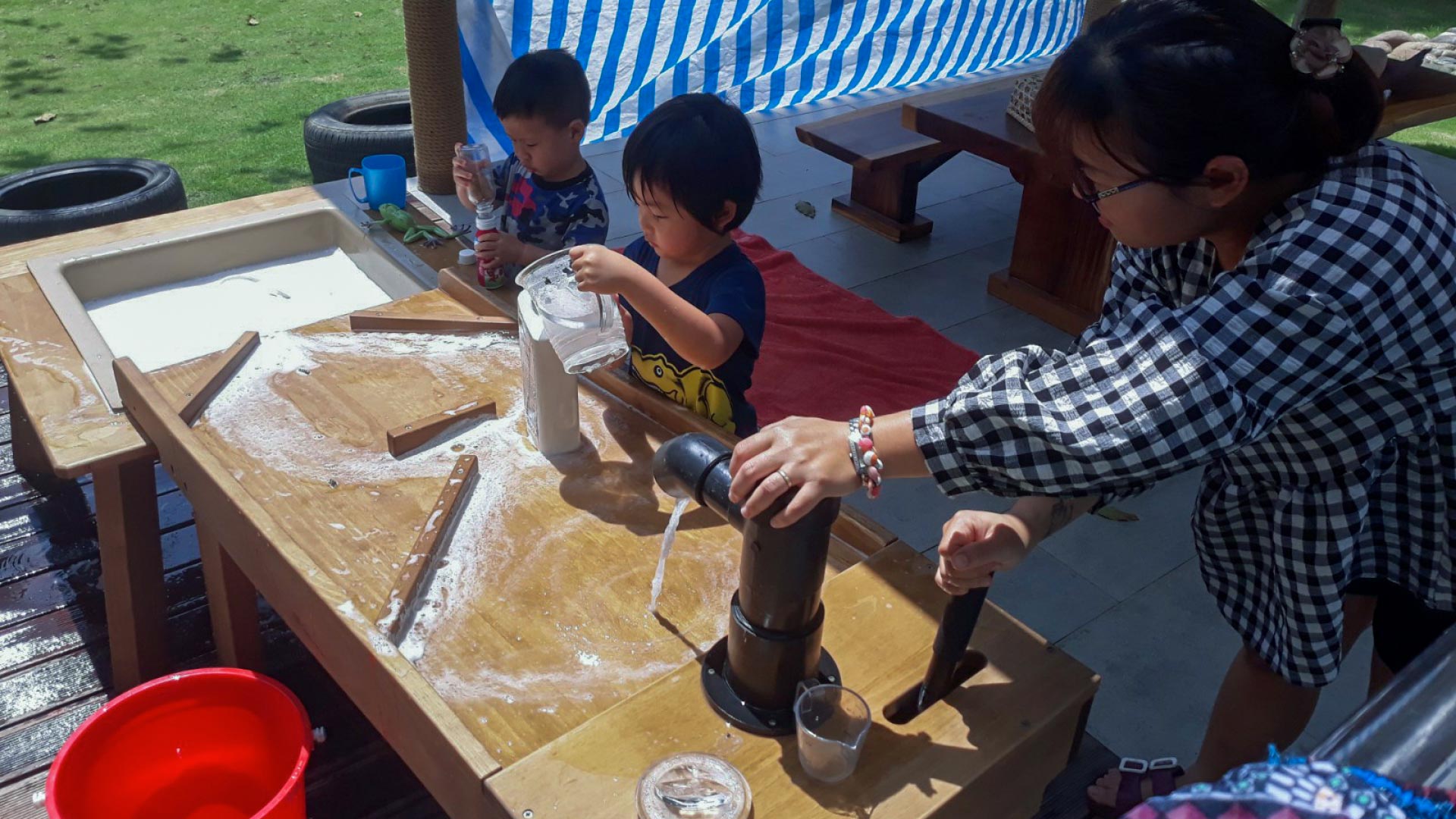
At strategic moments, during play with water and tools, teachers typically ask intentional questions to extend children’s thinking, expand their memory, and help use evidence to support their ideas. This can happen either as children are working, during transitions, or afterwards in a more extended small group discussion (Lewin-Benham, 2011). Discussion during or after an activity is almost always preferable to discussion before the activity (except for making predictions about what children expect to happen or how much a container holds, for example), because children have more knowledge and experience and can contribute more after having explored the medium and tools. Discussion before the exploration usually involves more telling by the teacher than thinking by the children.
Many of these discussions lend themselves to recording and documentation. Children can help create KWL (know, want to learn, learned) charts, predictions, outcome or comparison lists, charts, and/or drawings and models to demonstrate what they think will happen, what they actually observed or caused to happen, and how the two are alike or different. Use these results to stimulate further discussion with children.
Choose Compelling Science Processes Sink and Float The concepts of sink and float are common science curriculum at the early childhood level. However, sink and float encompasses many more sophisticated concepts that primary children can also discover when accessories are placed in the water table (or any large basin) with intentionality to help children to engage in the scientific process and grow their thinking. Young children can explore the forces of buoyancy, displacement, up thrust, porosity, and density for months (see Table 1 for details) with simple materials that are recycled, found in the classroom, or purchased in inexpensive retail stores. A teacher might begin these explorations with a group of large and small, heavy and light, items that sink or float—challenging the common expectation of young children that large, heavy things sink and small, light things float. An excellent choice is fruits and/or vegetables that children will wash and cut for snack. Children (and even graduate students) are usually delighted, surprised, and confused when they see a large pumpkin float and a lima bean sink! Another possibility is to offer children a large wooden block of wood (that will float) and coins (that will sink). Children spend many happy hours finding objects themselves to see whether they sink or float. Eventually, they often figure out for themselves, if they are not told, that what something is made of matters and that shape plays a role in floating and sinking. For example, children can be given clay or foil to shape into boats and try to float them. Record children’s findings from these explorations on simple charts labelled FLOAT and SINK. The influence of density is a concept that children will not usually discover on their own, without some mediation from the teacher. However, conversations about density are more meaningful and memorable when they come after much play. The delight in this activity can go on for weeks, until children tire of it, having investigated as far as they can, for the moment. The idea of objects being porous, and whether porous objects sink or float, is another concept embedded in children’s exploratory water play. Children can submerge sponges, cloths, and/or paper towels in water, then squeeze them over cups to see what happens when water is absorbed into an object. Find out which item holds more water. Children can investigate this and related ideas over and over again at clean-up time as they wash the tables for lunch, or as an activity in itself.
Bubbles
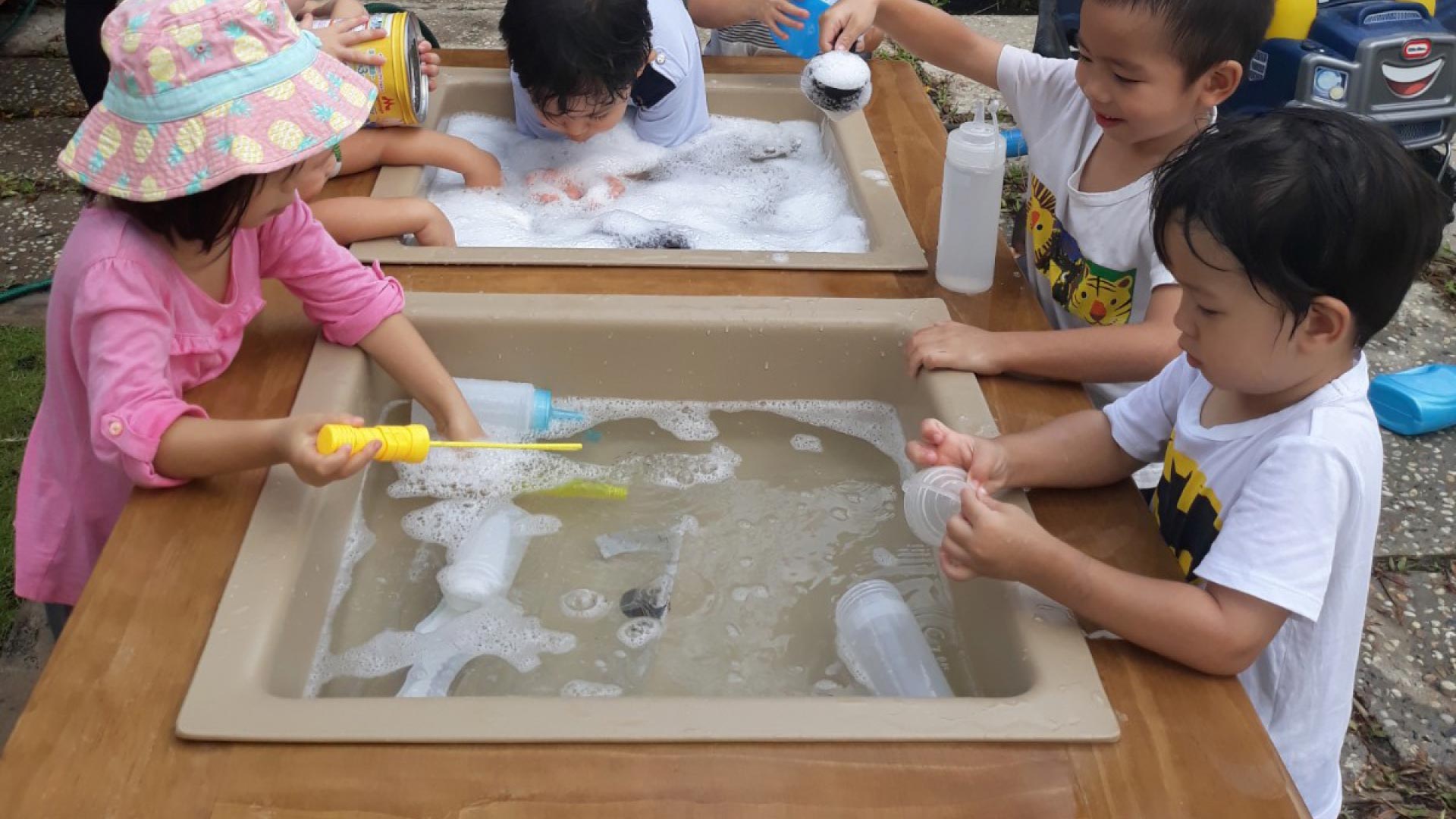
Bubbles Similarly, play with water and soap holds a number of complex science concepts for exploration such as cohesion, surface tension, surfactants, light spectrum, and others (see Table 2). Some dishwashing detergents, particularly Joy® and Dawn®, when mixed with three or four times as much water as soap in a small basin, will produce hundreds of satisfying bubbles. An ounce or so of corn syrup, while not necessary, can add to the lasting quality of the bubbles. Children use common household or classroom items like these to create bubbles:
- colanders
- slotted spatulas and spoons
- unused fly swatters
- screens
- large-hole buttons
Why are bubbles formed? Cohesion happens when water molecules stick to each other. One way children can find this out is, again, through a mediated process. Children fill a cup of water to the brim. With an eyedropper and another container of water, they continue to add water to the cup drop by drop until it overflows. Children who can count to 50 or so (as some kindergartners and most 1st graders can), can predict and then see how many drops it takes to make the water spill over the edge of the cup. Children are especially excited when the water forms a dome above the edge before it finally spills. Young children will eagerly do this many times before they fully believe it and internalise the scientific understanding, whether they remember the word cohesion or not. Actually, bubbles form in any water, but break quickly. The bubbles last when the water is mixed with soap because the soap acts as a surfactant and allows the molecules to separate more easily. Families and administrators will be especially impressed if children remember that word. They learned it through play! If children are asked about the shapes bubbles come in, they may play with and blow bubbles for days before they realise that, no matter what shape tool they use, the bubble always comes out a sphere (except when it is touching another bubble). Later, when children are older, they will learn that this is the case because of the mathematical properties of shape. For now, it simply makes them wonder. If a teacher asks what colour children think the bubbles will be if food colouring or paint is added to the soapy water, they may be surprised at what they discover. Again, children will need time to play with the coloured bubble solution before they conclude that bubbles are always transparent, except for the rainbow at the edge. The rainbow is the colour spectrum created by the reflection of light on the bubbles. To record bubble shapes, blow them onto plain paper or use the paper to catch them as they fall. What happens when the bubbles pop on the paper?
Mixtures and Solutions
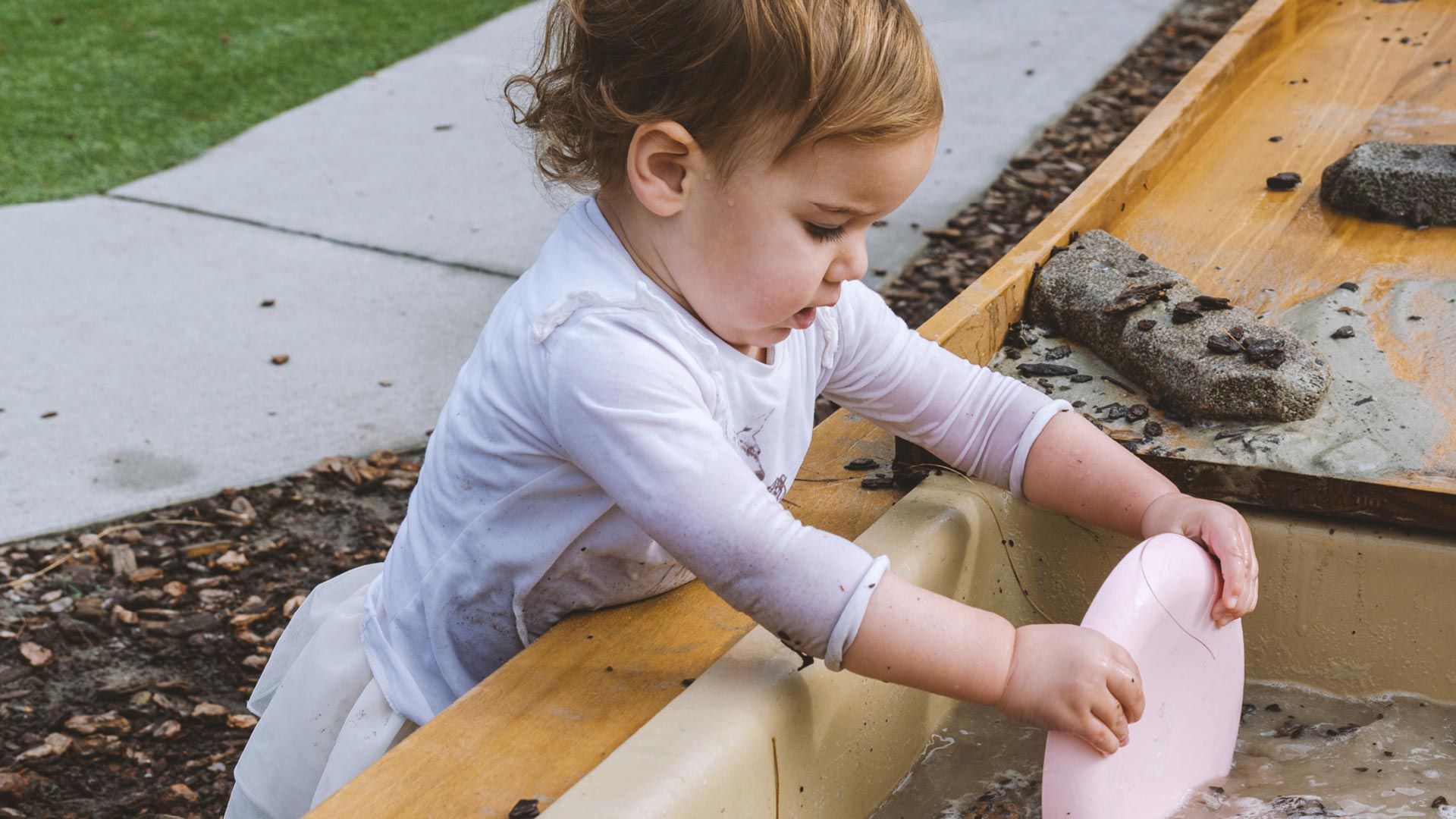
"One principle of scientific investigation is that, if teachers refrain from teaching/ telling answers to questions like this, children will continue to explore."
Other mixtures and solutions, equally easy and safe to form, can become fodder for children’s exploration process. This work leads to the ideas of emulsion and suspension, in addition to further understanding of surfactants and more (see Table 3). To offer children ways to explore solutions, first ask families to help collect clean, clear recycled plastic bottles with tops, such as water and soda bottles.
Find a few sturdy funnels. Ask children to help prepare bowls of salt, oil, water, or other substances. Record responses as children predict whether the two substances will blend together, and then mix and see what happens! Which items dissolve, which mix while being stirred but then separate (are suspended), and which do not mix at all. At another time, after much experience with mixtures, solutions, and suspensions, children can make mayonnaise. They will discover that some seemingly unbendable substances, such as oil and egg, can mix and stay mixed when added slowly while stirring. Offer the word emulsion, which describes this type of mixture.
Children are delighted to learn these technical terms. Of course, enjoying big words is not necessary to children’s understanding of the concepts, but learning them now adds to the integrity of the learning process. Children can mix water and corn-starch to play with, the concoction many teachers are familiar with known as Oobleck or Goop. Is Oobleck solid or liquid? One principle of scientific investigation is that, if teachers refrain from teaching/ telling answers to questions like this, children will continue to explore. After an answer is given, exploration and learning often come to an end. Sustain learning by refraining from the urge to answer such questions!
Water Flow
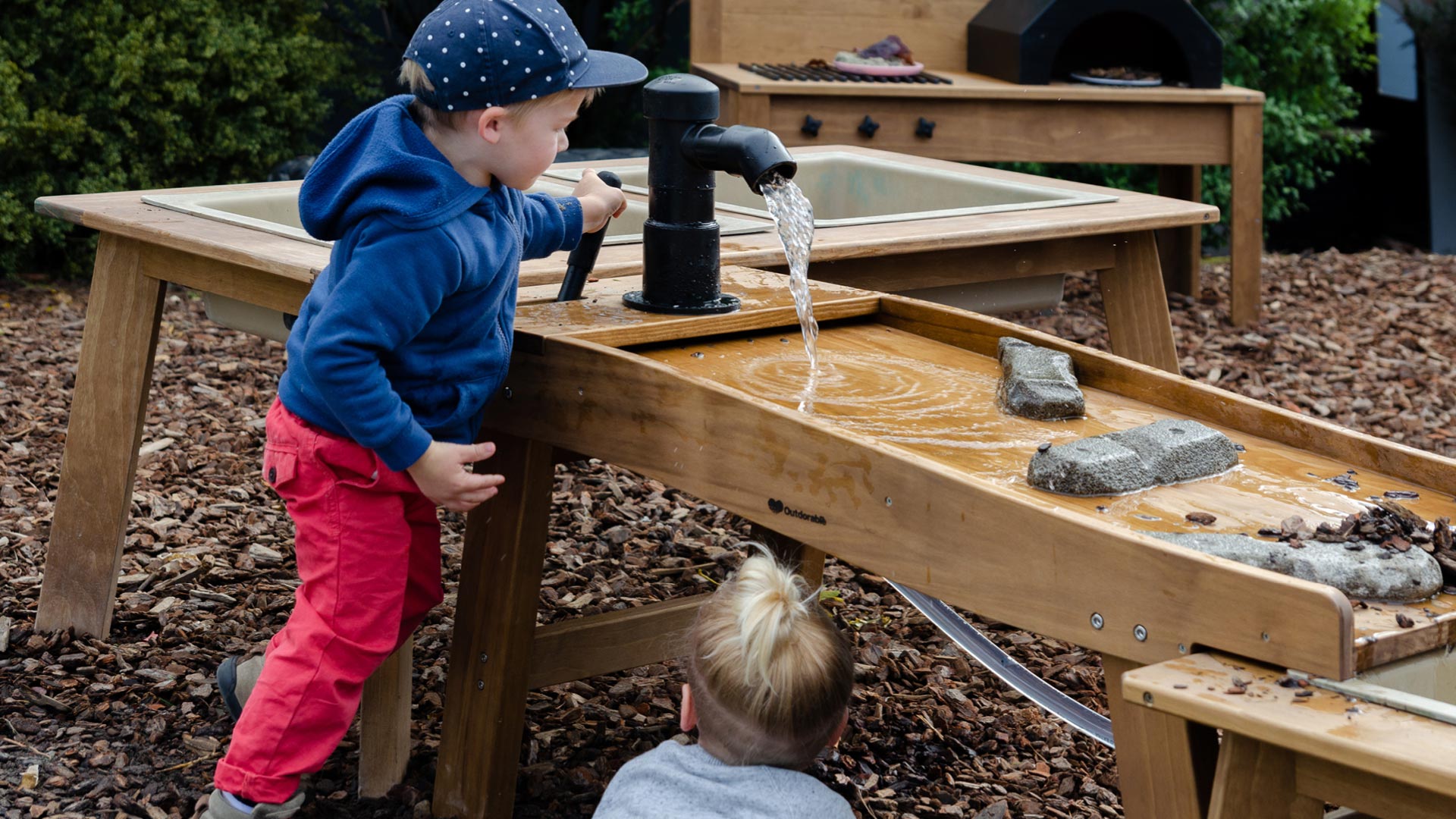
"Children are fascinated by making water flow. Provide them with opportunities to understand how flow works and what stops it as they solve problems over and over in different ways at a water table or outdoors."
Flow is another concept that children can understand through the simple process of playing with intentionally chosen materials. Provide transparent plastic pipes and connectors, found in a hardware store. Children can build pipe systems, and then pour water and watch it flow down through their system into the water table or a bucket (Dinwiddie, 1993; Sible, 2000). Children are fascinated by making water flow. Provide them with opportunities to understand how flow works and what stops it as they solve problems over and over in different ways at a water table or outdoors. One school offered these materials outside so children could make longer systems all over the playground. The teachers then took children to the school basement to see the pipe system. A more complex water system that children can help design is shown in Figure 1
Measurement
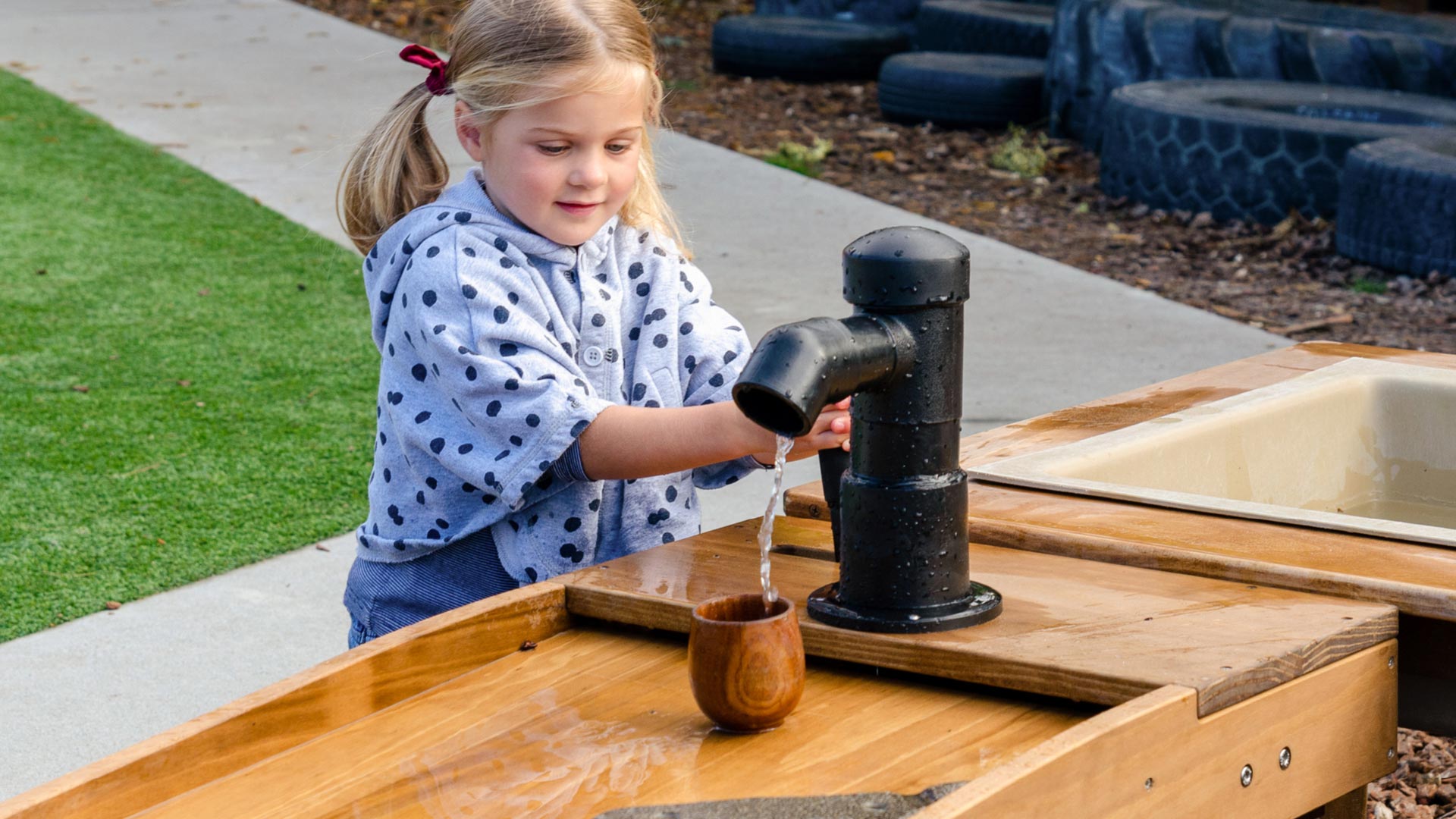
"Young children may not yet understand the concept of conservation, but their experiences with water play will move them closer toward that comprehension."
Children can, of course, learn much about measurement through water play. The simplest materials for this are containers of various sizes for pouring. Teachers can ask which container has more water, which has less and which is the same, or equivalent. Then, children can be asked how many of one container or baster it will take to fill a larger bottle. They will often do this over and over, comparing their answers with each other. They will be surprised if they notice that it is the same number for each container when they are of different shapes. When children are ready to consider more precise measurements, add marks on plastic containers with fingernail polish for half- and/ or quarter-full places to extend the mathematical learning. Measuring cups, in various sizes, will also enable children to use more accurate measuring and introduce both the metric system and fractions. Pouring alone provides practice in counting, one-to-one correspondence, fractions, volume, conservation, and many other math and science concepts. Young children may not yet understand the concept of conservation, but their experiences with water play will move them closer toward that comprehension. This play/study will fill hours of exploration for children from 4 year olds to at least age 7. Evaporation Young children can explore evaporation in numerous ways through play. As mentioned earlier, they can investigate it while washing the table after lunch or any messy activity. They can explore it outside in summer, with paint brushes on warm bricks or other dark surfaces where they can watch the water evaporate almost instantaneously. Children can examine evaporation inside by painting with water on a chalkboard and watching it evaporate, albeit a little more slowly. The risk of a slippery floor can be eliminated and evaporation can be observed again while mopping. Make sure to have small mops so children can participate.
"The social learnings from water play include collaboration, concentration, turn taking, problem solving, perseverance, self-regulation, and more."
For a responsive, intentional, and reflective teacher, these concepts are only the beginning of the science that children can learn from water play/study. Water play can branch into social studies for older preschool and elementary children in investigations of waves, rivers, lakes, oceans, the environment, and even natural disasters (Davis, 2005; Dove, Everett, & Preece, 1999; Frost, 2005; Hendrick, 1997; Maynard & Waters, 2007; Trisler, 1996). Children can use experiences with water as opportunities for art and creativity, as well (Dove, Everett, & Preece, 1999; Szekely, 2003). When children paint with water on a chalkboard and it evaporates quickly, they can easily change their work or try another technique. Painting with water on a chalkboard is also a good introduction to art and painting before children ever use paint, or as a beginning to paint at the start of the year. With water, children explore the possibilities of movement with a brush. They can be less concerned with drips and spills as they express ideas and feelings through art media. Children can also experiment with mixing colors in water without the finality of doing it on paper. The social learnings from water play include collaboration, concentration, turn taking, problem solving, perseverance, self-regulation, and more. Social skills may be one of the most long-lasting learnings children gain through water play, possibly helping them develop these attributes for a lifetime. Young children also gain physical learning through water play, such as precision in pouring, eye-hand coordination, and other skills. When children pick up buckets or other objects filled with water, they build muscle strength. Water play is particularly useful and therapeutic during the learning of children who have special needs (Dodge, 2002; Goltsman, 1997; Texas Department of Human Services, 2001). Water often helps children with behaviour problems calm themselves. It is multi-sensory for children who have vision and hearing impairments. It is a more forgiving, less frustrating material than other media, especially for children with learning disabilities. Children’s learning from water play/ study clearly is multidisciplinary. It can help children further their understanding of how the world works, where things come from, and how things are made. Water study belies the notion that young children have a short attention span. Exploring with water is captivating, engaging, engrossing and absorbing to almost all children and even the adults who care for them.
References
American Association for the Advancement of Science (AAAS). (1993). Benchmarks for science literacy: Project 2061. New York, NY: Oxford University. Chalufour, I., & Worth, K. (2005). Exploring water with young children. St. Paul, MN: Redleaf Press. Crosser, S. (1994). Making the most of water play. Young Children, 49(5), 28-32. Davis, J. (2005). Educating for sustainability in the early years: Creating cultural change in a childcare setting. Australian Journal of Environmental Education, 21, 47-55. Dinwiddie, S. (1993). Playing in the gutters: Enhancing children’s cognitive and social play. Young Children, 48(6), 70-73. Dodge, D. (2002). Creative curriculum for preschool (4th ed.). New York, NY: Pearson. Dove, J., Everett, L., & Preece, P. (1999). Exploring a hydrological concept through children’s drawings. International Journal of Science Education, 21(5). 485-497. Feuerstein, R. (2011). Beyond smarter: Mediated learning. New York, NY: Teachers College. Frost, J. (2005). Lessons from disasters: Play, work, and the creative arts. Childhood Education, 82(1), 2. Gallas, K. (1995). Talking their way into science: Hearing children’s questions and theories, responding with curricula. New York, NY: Teachers College.
Goltsman, S. (1997). Designing playgrounds for children of all abilities. School Planning and Management, 36(10), 26-29. Havu-Nuutinen, S. (2005). Examining young children’s conceptual change process in floating and sinking from a social constructivist perspective. International Journal of Science Education, 25, 259-279. Hendrick, J. (1997). First steps toward teaching the Reggio way. Columbus, OH: Merrill, Prentice Hall. Katz, L., & Chard, S. (2000). Engaging children’s minds: The Project Approach. Stamford, CT: Ablex. Lewin-Benham, A. (2011). Twelve best practices for early childhood education. New York, NY: Teachers College. Malaguzzi, L. (1993). For an education based on relationships. Young Children, 49(1), 9-12. Maynard, T., & Waters, J. (2007). Learning in the outdoor environment: A missed opportunity. Early Years, 27(3), 255-265. Montessori, M. (1967). The discovery of the child. New York, NY: Random House. National Research Council. (1996). National science education standards. Washington, DC: National Academy Press. Sible, K. (2000). Water, water everywhere. Young Children, 55(1), 64-66. Szekely, G. (2003). Water artists. Arts and Activities, 133(5), 42. Texas Department of Human Services. (2001). Explorations with the sand and water table. Texas Child Care, 25(1), 28-35. Tovey, H. (1993). Re-appraising nursery water play. Early Child Development and Care, 92, 29-35. Trisler, C. (1996). Whose water is it? Science Activities, 32(4), 16-21. Vygotsky, L. (1978). Mind in society: The development of higher psychological processes. Boston, MA: Harvard University. Wallace, A., White, M., Stone, R., & Kastberg, S. (2010). Sand and water table play. Teaching Children Mathematics, 16(7), 394-399. Wassermann, S. (1990). Serious players in the primary classroom. New York, NY: Teachers College. Wenham, N. (1995). Understanding primary science. London, UK: Paul Chapman. Worth, K., & Grollman, S. (2003). Worms, shadows and whirlpools: Science in the early childhood classroom. Portsmouth, NH: Heinemann.
About the Author
Carol M. Gross, Ed.D., is an Assistant Professor at Lehman College of the City University of New York in Bronx, New York. She has taught young children and pre- and in-service teachers at the undergraduate and graduate levels for almost 40 years. She currently teaches methods courses in science for early childhood teachers and supervises student teachers.








